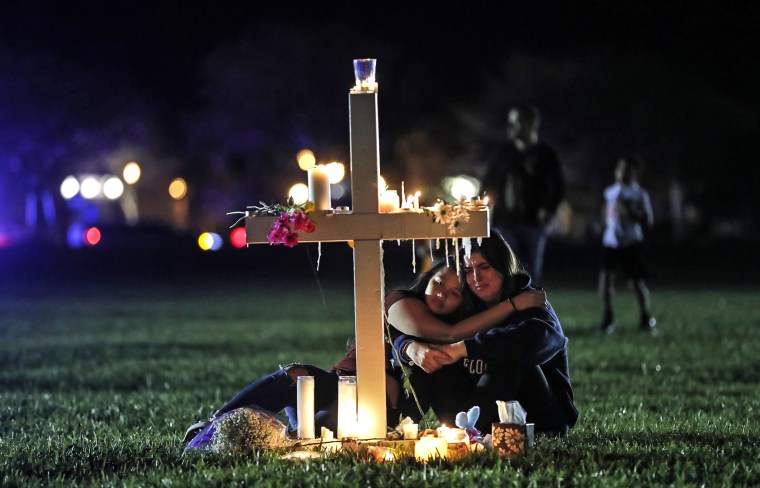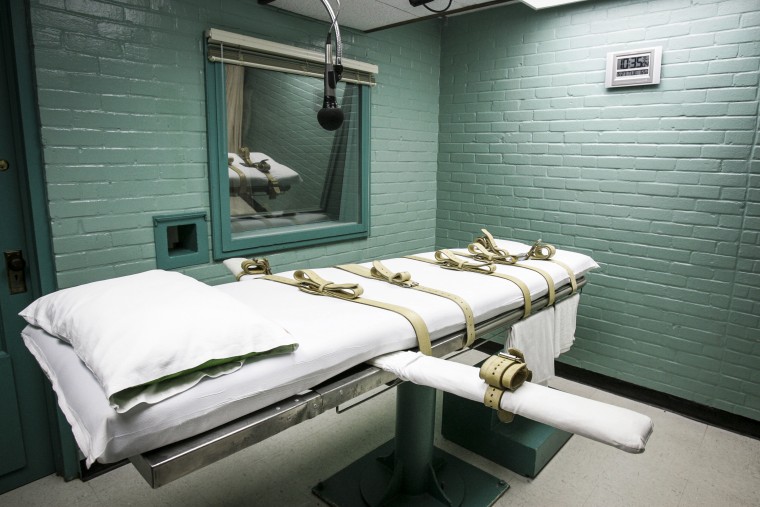Right now, Florida is looking for 12 jurors to decide whether Nikolas Cruz should be executed for killing 17 people at Marjory Stoneman Douglas High School in Parkland in 2018. This trial, which is expected to draw out for months, will decide whether Cruz, who pleaded guilty to 17 counts of murder and 17 counts of attempted murder, should be put to death for his crimes or be sentenced to a mandatory minimum of life without parole. It is sure to electrify this country’s already heated debate on capital punishment.
In many ways, this case is enough to test any death penalty opponent’s resolve: Cruz is responsible for the tragic, heart-wrenching deaths of children and heroic educators. Of course, the criminal legal system must hold responsible those who commit serious crimes, and the families of the victims deserve to see Cruz held accountable. And yet, this case will surface issues bigger than whether one individual should live or die; it will force us to ask ourselves, yet again, whether this nation is willing to continue to embrace a failed state-sanctioned system of execution.
Our government has spent centuries looking for a humane way to kill, going from torturous methods like public burnings to hangings to electric chairs.
Our government has spent centuries looking for a humane way to kill, going from torturous methods like public burnings to hangings to electric chairs. After the state of Oklahoma killed John Grant last October, it announced that his execution had been carried out “without complication.” The autopsy results, however, painted a different picture: In the nearly 15 minutes it took Grant to die, his lungs filled with fluid, which can create a sensation not unlike drowning, as he choked on his own vomit while struggling to breathe. And now, the federal government is reviewing federal protocols to ensure they do not inflict unnecessary pain and suffering during executions.
Lethal injection was supposed to address these concerns, offering the promise of a quiet, painless death. Yet in recent years we are increasingly learning that, while death by lethal injection may appear more humane from the outside, it can actually evoke extraordinary pain and suffering. We’ve seen this cycle play out over and over in capital punishment: a new reform promises to fix what’s broken about the death penalty, but the closer we look, the more it unravels. It is finally time to end that cycle of futility.

The three of us have collectively served as prosecutors for more than 50 years. While we have taken different pathways to get here, we have each reached the same inexorable conclusion, as have 57 elected prosecutors across the country: The death penalty cannot be fixed and must be ended. And with six more people set to be executed over the next month, there is no time to wait.
Most of the world has gradually abandoned the death penalty and, for a while, it looked as if the United States would follow suit. In 1972, the Supreme Court barred the U.S. from carrying out executions, deeming our capital punishment system so arbitrary and discriminatory as to be unconstitutional. But four years later, it allowed executions to resume, finding that new protections had the potential to “fix” the unconstitutional aspects of the old system.
The post-1976 death penalty was supposed to be different: less arbitrary, less racially biased, with more safeguards to protect the innocent, and focused on only the most extreme cases. Yet 46 years later, the same problems persist. Death row is still filled with the most broken and vulnerable — including people with serious mental illness, severe intellectual disability and histories of unspeakable trauma. The death penalty is still more likely to be invoked against Black defendants, particularly in cases involving white victims. And the single most important factor in determining whether someone will receive a death sentence is not the crime they are accused of but the jurisdiction where the crime took place.
For every nine people who have been executed since 1976, at least one condemned person has been exonerated.
Perhaps most devastatingly, we still undoubtedly risk putting innocent people to death. For every nine people who have been executed since 1976, at least one condemned person has been exonerated. The National Academy of Sciences estimates that more than 4 percent of current death row prisoners are innocent. Even in cases that do not end in a death sentence, the mere prospect of capital punishment can corrode the workings of the justice system, compelling innocent people to confess and plead guilty and witnesses to deliver false testimony.
Given its obvious flaws and dire risks, one might expect that our nation’s continued reliance on capital punishment is based on overwhelming public safety benefits. But, in fact, there’s little evidence to suggest that the death penalty benefits public safety at all, much less that any benefits outweigh its staggering costs. Research shows that countries have often seen a decline in murder rates after abolishing capital punishment, and, in the U.S., homicide rates are consistently higher in states that allow the death penalty than those that ban it, underscoring the lack of a deterrent effect.
Decades of research tell us that people are deterred by the likelihood of getting caught rather than the severity of a sentence. It makes sense: People who commit capital crimes rarely take the time to rationally calculate the risk of their actions; even if they did, they are more likely to think about the odds of being arrested than to consider an uncertain, distant death sentence. The death penalty’s seemingly random application makes it nearly impossible to predict which cases will result in death sentences, which makes it an even less effective deterrent. And amid today’s tragic culture of gun violence, we have a greater obligation than ever to pursue real solutions to violence rather than looking to failed past approaches.
Decades of research tell us that people are deterred by the likelihood of getting caught rather than the severity of a sentence.
We’ve tried reforming and limiting this system over centuries, moving executions from public squares into private rooms, swapping out execution protocols, narrowing the crimes eligible for a death sentence, banning the execution of kids and people with intellectual disabilities, and adding layers of procedural protections, at least on paper. But still, no matter how much we tinker with procedures, when we get down to the core of the process, all we are left with is a group of people deciding whether another person should live or die. This process can never be made perfect or bias- and error-free, simply because it is administered by people and people are fallible.
And yet, we cannot tolerate anything less than a flawless and error-free process when it comes to state-sanctioned killing.
Famed capital defender Bryan Stevenson has often said that we should not ask whether people deserve to die but whether we deserve to kill. A criminal legal system that imprisons Black people about five times the rate of white people, that often conditions due process (including quality of representation) on wealth, in which judges regularly refuse to consider evidence that an innocent person has been wrongly convicted on the basis of procedural technicalities, and in which the highest court has ruled that evidence of actual innocence based on newly discovered information does not entitle a convicted person to a new trial, does not deserve to kill.
We cannot continue to prop up this failed system. No matter how horrific or heart-wrenching the case in front of us, we have to remember that as long as the death penalty exists, it will continue to amplify the worst parts of our justice system.
We’re well past the time for quibbling over how to kill. Now it’s time to grapple, once and for all, with if we kill. And the answer must be a resounding no.
